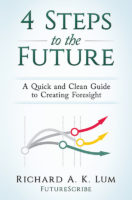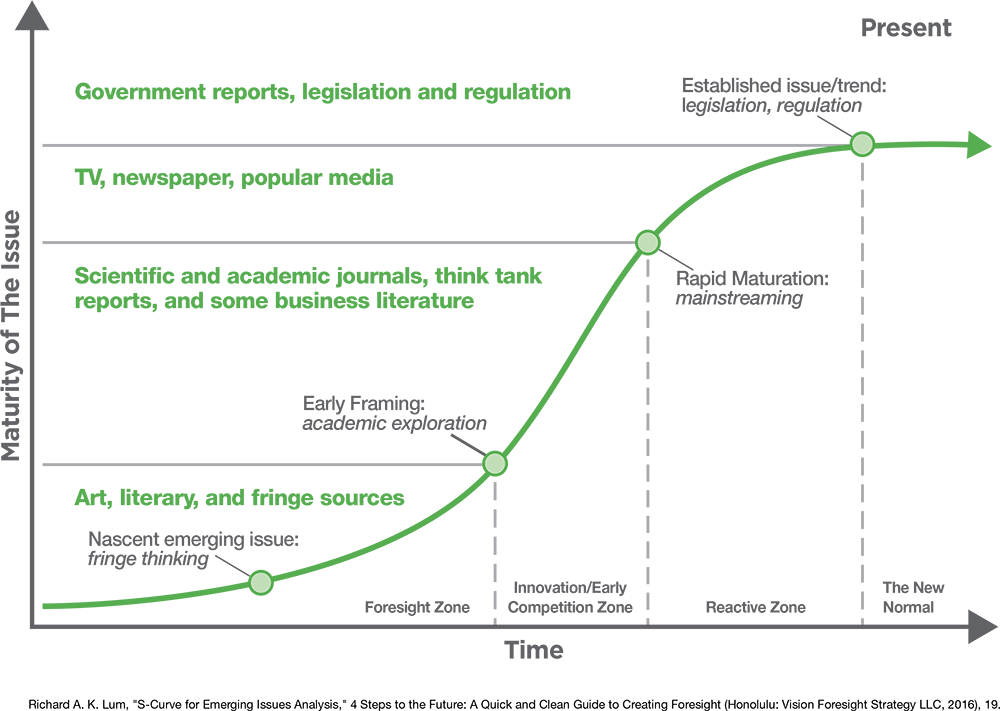Looking at such a graph, it’s easy to assume a trend line will just continue where it’s going, but without a crystal ball we actually cannot know that for sure. Futurists can use various techniques to help forecast where trends might actually be going, taking into account things like stabilities (forces that stand in the way of change, and could slow, stop, or even reverse a trend). Examples of stabilities include:
- Traditions (“But we’ve always done it that way!”)
- Physical constraints (“Escaping climate change by moving to Mars isn’t an option until we figure out how to survive there indefinitely.”)
- Entrenched, powerful stakeholders (“Lobbyists are trying to kill the proposed sugary drink tax because it would cut into corporate profits.”)
But not all trends impacting the future are already trends today. Futures Scans also hunt for the faint signals of emerging issues—fringe ideas that may eventually develop into trends.
FORESIGHT kicked off with an intensive Futures Scan (currently in progress), identifying and understanding trends and emerging issues likely to influence the future of health and well-being.
In another part of the initiative, the FORESIGHT team will work with residents and other stakeholders in regions across the country to build a shared body of knowledge. We are straight-up asking the most varied array of people we can about their lived experiences with health and well-being, as well as their aspirations for the future of the system that produces health—making the process as equitable and inclusive as we can from the very start. This plan will give us a good idea of what’s going on in the present so we have the building blocks to start constructing alternative futures scenarios—ones that are built around the aspirations of all people—later on in the project.
What trend or emerging issue do you think will define the future of health and well-being? Share your forecasts with us by leaving a comment here or on social media using the hashtag #FutureForHealth.

